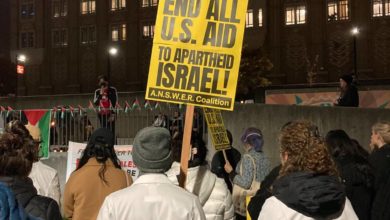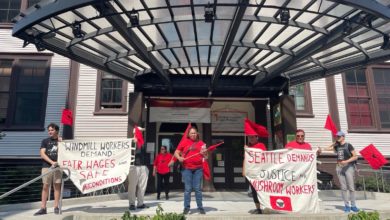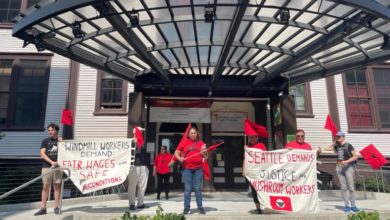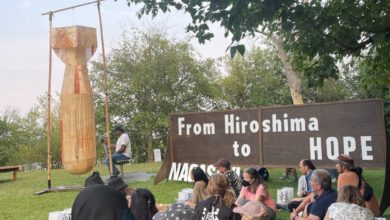Poor and working people in Washington state are reeling from the rapid turn of events since Feb. 29 when the first death in the U.S. from COVID-19 occurred at the Life Center in Kirkland near Seattle. At this point, all K-12 and post-secondary schools in the state are closed, bars, restaurants, gyms and other businesses are closed in the most populous counties in the western part of the state, tens of thousands of people are working from home. Others are not working at all as businesses close; many will be accessing unemployment; still others, also deprived of income, do not qualify for unemployment insurance and have no safety net other than the goodwill of family, friends and even strangers.
Yet even in the face of what seems like a terrifying prospect, these workers, young and old, are thinking hard about how their actions can impact others for better or for worse. Even under the conditions of social distancing needed to flatten the curve, people are finding creative ways to show solidarity.
Liberation News spoke to some of the working class people impacted directly and indirectly by the pandemic in Washington state.
Older people the most vulnerable
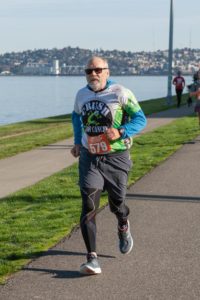
“Every little twinge I have, I worry, is this it? In general, I have been very healthy for the past 10 or so years, but now I feel more anxious about my health,” said Andy, a 66-year old tech worker who is now working from home. Experience with COVID-19 around the world as well as here in Washington state has shown that older people, especially those with underlying health conditions, are much more vulnerable to life-threatening impact from the virus.
“I believe that if they made sure that tests were available, they could do mass testing, they could treat and isolate those that are positive, and we could stop this. We really need to test everyone, right now, “ he concluded.
On the frontlines of healthcare
Jonathan works at Valley View Health Center in Chehalis, Wa. as a bilingual medical receptionist.
“Every other day there is an updated protocol on how we are checking in patients with flu-like symptoms, Now we have them wait outside, and meet them outside…So far only one patient has been sent out to the car, but you can feel the tension in the waiting room, people moving away from those with a cough..
“The phone lines have been hit very hard, people calling in to see if we have test kits, more people calling for symptom checks. We do not have test kits, not yet anyway, and we don’t know when we’ll get them. They said that some of us will be fitted for N-95 masks, but there is a supply shortage so not all of us are going to get them.”
Restaurant bubble bursts
Sarah is a line cook at a high end restaurant in Seattle on the Capitol Hill. She is now unemployed as a result of the economic impact of the pandemic in Seattle.
“Yes, I’m worried about the money, I don’t know when I am going to have a job again, but the mayor suspended evictions. I am more worried about just being safe for myself and other people and that my life is about to change very much.”
Fight the virus not people
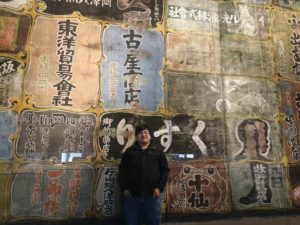
Deyland Somer is a tour guide working for the Wing Luke Museum of the Asian Pacific American Experience in the historic Chinatown-International District.
“Even before the pandemic reached the Seattle area, fear and xenophobia were causing a drastic decline in commerce in the neighborhood, including a large drop in the amount of visitors and tours at our museum. Now that the pandemic is here, we’ve been forced to close for at least a month and cancel our largest fundraising event of the year. I’m seriously concerned about the future of the museum and my job.
“The U.S. government should have used the time that China bought us to adequately prepare for this pandemic. We could have built emergency hospitals, expanded funding for public health, and given access to testing to as many people as possible. We could have worked with the Chinese government and learned from their heroic efforts instead of attempting to use the crisis as a geopolitical weapon.”
K-12 schools closed
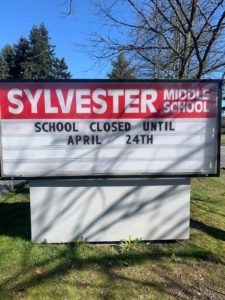
Raquel is a teacher at Sylvester Middle School in Burien, Wa, just outside of Seattle. All K-12 schools in the state are now closed until at least April 24.
Before the schools closed, Raquel worked with students in the leadership class to prepare the school community. “I made sure that our morning announcements included 1) proper hand washing and coughing techniques 2) an ask for students to be socially aware of bullying around the topic (calling out that the virus isn’t relevant to race, especially since we have a large Asian population) and what to do if they hear it and 3) messages to calm some of the anxiety around the threat.”
A lot of the debate about whether or not to close schools has been based on the non-educational role that schools play, providing food and a safe place for children to be while parents are at work. Raquel pointed out, “A large part of the problem is that we have used systems like education to substitute many of our failures. The government could have enacted living wages, mandatory paid leave, and affordable healthcare so that people could afford to stay home when they need to.”
Childcare and preschools still open
Shannon is a preschool teacher working at a large, private, national child care center near the site of the first deaths in the state. The school district around her center was the first to close, before the statewide order, but even after the governor closed K-12 schools, preschools and childcare centers have remained open despite concern from parents and teachers.
“I have already run out of sick time this year. We have been told if the center is closed workers will be paid if it was recommended by local health officials. We are just a few miles from Kirkland, the districts are all closed, but we are open.
“To add insult to injury, they are cutting hours because attendance is down. Cutting hours–the parents pay by the month. So why cut hours ? They are just profiting off this.”
(The company has since announced it is closing most centers giving workers only two weeks of pay or the “option” to work in the remaining “hub” centers with incentive pay or provide in-home care as nannies. The issue of teachers in high risk categories has not been addressed.)
Union electricians resist

Erica Salazar is a union electrician with IBEW local 46. Last week, someone on the construction site tested positive. Workers were sent home early on Thursday and the site was closed Friday, but they all were expected to return to work Monday.
“It’s not really possible to sanitize the kind of work we do. So going in I wouldn’t be surprised if I get sick, but I am in a situation between needing to pay tuition, [for apprenticeship,] pay rent and maintain my health insurance. I have been stuck at home because I can’t in good conscience go out because I might have been exposed. But the expectation is to return on Monday.
Salazar told Liberation News that she and another electrician have decided not to return to work at the site and have each others’ backs.
Homeless people sticking together
Sean Smith was a line cook for more than 20 years and is now applying for disability. He has injuries of the back and hips which make it impossible to stand on the line. He has lived for three years at Nickelsville Northlake, a self-managed community of homeless people that was started as an act of civil disobedience in 2008.
Nickelsville has been under attack by the city and a corporate non-profit that had been acting as a fiscal sponsor. After the hostile takeover of several other Nickelsville sites, Northlake NV was faced with an eviction order. The village stood strong with community support; most recently a petition was circulated to stop the eviction of the camp during the COVID-19 emergency.
The city has backed down and offered to allow the village to remain until June 1. Smith told LIberation News that he had just been part of a meeting that voted to accept the city’s offer because they believe they can stay safer by remaining together.
Because of cuts to food stamps and loss of income for residents who do day labor, the village is in need of cleaning supplies and non-perishable grocery items.
Musicians and the gig economy
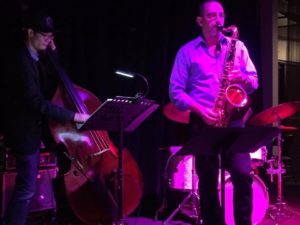
Nate Omdal is the lead organizer for the Musicians Association of Seattle Local 76-493. Musicians have been hard hit by the closure of bars, clubs, large gatherings and schools.
Most working musicians do not work for one single employer but may work a number of different jobs, and file under 1099 (self-employed or supplemental income). The relief bill requires that workers demonstrate 600 hours with one employer, leaving out many musicians and others in the “gig economy.”
“Right now the Washington State Labor Council is putting organizers together to eliminate the 600 hour requirement. We are telling people to apply and get denied so we have evidence to show that the package is inadequate, and we put together an infographic to explain this. So apply and expect to get rejected.
Omdal has set up a fundraiser for music teachers. Musicians are also streaming home concerts, even collaborating virtually, and adding virtual tip jars to their shows.
“We hope to be a good example of solidarity and support. Artists and musicians are a good barometer for how effective a program is because we are so representative, but we are also the creative ones, trying to stay positive.”

